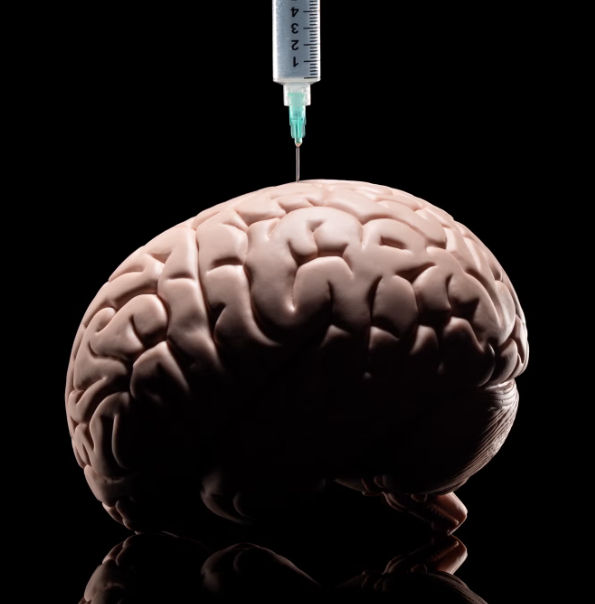PICTURE THIS SCENE: it’s 2am. Your eyes burn, a dull ache throbs behind your temples, and your phone’s blue light casts a ghostly glow. Hours have melted into the digital ether since you swore you’d check ‘just one last thing.’
This isn’t merely a bad habit; it’s a behaviour known as doomscrolling, a mindless consumption of negative information that’s silently rewiring our brains with every swipe. It’s part of an unsettling truth that sees our devices, now used for around three hours a day, as part of a wider seven hours spent engaging in screen-based activities, becoming a tool that has the power to disconnect us from ourselves. So, when will we decide to finally unplug?
The reason this feels so difficult is that doomscrolling isn’t just about willpower; it’s a neuroscience issue. Your smartphone, with its infinite feed, is meticulously engineered to hook you with fleeting dopamine hits, creating an almost irresistible pull. This is why you’ve probably felt the mental drain and exhaustion, yet breaking free feels impossible, leaving you a trapped observer.
What if understanding this digital addiction could be the key to reclaiming your attention? Here, neuroscientist TJ Power, known for his insights and his DOSE methodology, equips you with expert-backed tools to combat screen addiction, helping you unplug.
The endless scroll
Whether you’re guilty of ‘doomscrolling’, are feeling the effects of ‘brain rot’ from endless content consumption, or regularly find yourself deep in ‘scroll holes’, it’s vital to understand what this perpetual feed of information is doing to your brain.
Cambridge Dictionary defines doomscrolling as ‘the activity of spending a lot of time looking at your phone or computer, and reading bad or negative news stories,’ offering example phrases like, ‘I try to limit my doomscrolling to just half an hour a day,’ and, worryingly, ‘why is doomscrolling so compulsive and so darkly comforting?’
When asked for his take, TJ Power provides a neuroscientific perspective: ‘With doomscrolling, you can reach a point whereby people literally can’t get themselves to move [away from their phone],’ he explains. ‘They’re so deep in the doomscroll, and they’re thinking “I need to go do something, I need to eat, or do some work,” but their brain’s going “can’t do it, can’t do it.”’
To better understand the compulsive pull of doomscrolling, we also need a working understanding of dopamine. This brain chemical, also known as a neurotransmitter, plays a crucial role in motivation and reward, driving our desire to seek out and repeat experiences.
‘Humans have always wanted dopamine, but we might have only accessed it three or four times a day, when we found some food, or some water, or built a shelter,’ TJ explains. ‘We’re now experiencing around 500 dopamine increases today, with each time we swipe.’
‘Addiction is the progressive narrowing of the things that bring you pleasure’
He continues: ‘Dopamine in itself is addictive, because it’s pleasurable,’ he says, before I ask him if this can feed into smartphone addiction. ‘Addiction is the progressive narrowing of the things that bring you pleasure,’ he says. ‘For many people in their lives, they might be finding that the vast majority of the moments they enjoy in their life, they’re seeking the moment where they sit back on the sofa and nail their phone.’
You’ve probably done it yourself: a thumb-aching doomscroll session on the sofa, and felt the subsequent ‘brain rot’ that follows shortly after. Despite their effects, these two expressions have become Gen-Z labels that are often used in an ironically positive context, likened to having ‘me-time’, or a moment of respite. Sadly, says Power, there is ‘a big misconception that we all have, as modern humans, is that we think our phones are chilling us out, relaxing us, and are a nice use of our downtime,’ he says. ‘But, within our body, the exact opposite is happening.’
To prove this point, Power recently posted about a major study that proved excessive screen time can reduce the brain’s gray matter across three key areas: the left insula, temporal lobe, and the hippocampus. Respectively, each is responsible for memory, emotional regulation, and decision making. ‘You’re beginning to see, neurologically, that areas in the brain are shrinking,’ says TJ, putting the colloquialism of ‘brainrot’ into a concerning new perspective.
His post continues to highlight three common signs of brainrot – also known as cognitive decline, if that softens the blow – including being unable to sit without external stimulation, eat without watching something, or walk without headphones. Each has ‘a significant impact on our biochemistry,’ says TJ.

Why can’t we look away?
Swipe, tap, scroll: the relentless pull of the screen is a sophisticated hijacking of our fundamental brain chemistry. Instead of dopamine being earned through tangible effort, doomscrolling delivers it in unnaturally large and frequent doses. Power explains that this process takes place within the brain’s ‘dopamine factory’ (the ventral tegmental area, or the VTA) and the ‘reward centre’ found in the nucleus accumbens.
With constant scrolling, our brain ‘starts mass shipping the bubbles from the factory’ to the reward centre, but crucially, ‘there’s no effort involved’, he says. This constant, unearned flood means our brain isn’t regenerating dopamine in the ‘factory’, leading to a depletion that leaves us craving more without the capacity to act. ‘It’s because the doomscroll has depleted their dopamine to such a point where there is no motivation left at all,’ says Power.
A 2024 Harvard study revealed that this habit of doomscrolling, likely to have intensified since the COVID-19 pandemic, is a widespread and insidious issue that could be rooted in our brain’s primal fight-or-flight response, encouraging users to constantly seek out threats in distressing newsfeeds. This constant negativity leads to symptoms including headaches and elevated blood pressure; and, internally, existential anxiety and wider mental health issues. This might include ‘popcorn brain’, another term defined by scattered thoughts, lack of focus, and a tendency to flit rapidly between tasks, wherein your brain is compared to a microwave and your ideas are the popcorn kernels – each one popping off in a different direction.
Perhaps, then, it’s about trying to be in a permanent state of omniscience – of knowing everything – whether it’s swiping through neighbourhood Facebook groups or watching grainy footage of a foreign warzone. Writers including Olivia Laing have connected theories, similar to those published by Harvard, to our growing digital dependency. Laing observes that the internet’s flood of distressing news fosters a collective paranoid reading, which has now evolved into doomscrolling – a compulsive hunt for information as a form of self-defense against a world that feels out of control.
In Funny Weather: Art in an Emergency, Laing writes, ‘anyone who’s spent time on the internet in the past few years will recognise how it feels to be caught up in paranoid reading. During my years on Twitter, I became addicted to the ongoing certainty that the next click, the next link would bring clarity.’ She continues: ‘I believed that if I read every last conspiracy theory and threaded tweet, the reward would be illumination.’
Another set of research, conducted through three studies, linked doomscrolling to personality traits, including neuroticism, a lack of conscientiousness, and, inevitably, social media addiction. The study also confirmed that doomscrolling leads to increased psychological distress and decreased mental wellbeing.
3 ways to reclaim your attention
The first step to breaking free from the grip of doomscrolling is arming yourself with intentional strategies. The second? Rewiring your brain and reclaiming your time. Here’s how.
1/ Win the morning battle
The first step in breaking the doomscrolling cycle is to establish control over your phone. Power emphasises that ‘the best way to regain control over your phone is when you wake up in the morning, and learn to beat that first check.’ Whenever you ‘engage willpower and win the fight over anything’, he says, ‘whether it’s sugar, pornography or your phone, the anterior midsingular cortex gets stronger.’
2/ Accomplish, then accomplish again
‘Your brain is craving accomplishment,’ reads a recent post from Power. ‘Accomplishment when you wake is essential, and learning to see sunlight before you see social media every morning is the first step.’ He continues to advise getting ‘outside more’ and ‘finding an activity that you love’ and ‘that pushes you’. This, he hypothesises, will increase levels of dopamine – as will, perhaps less enticingly, the housework, from vacuuming your lounge to emptying your dishwasher. ‘A great life is on the other side of a motivated brain,’ says Power.
3/ Implement digital boundaries
Beyond internal willpower, practical tools can create essential barriers. Power shares his strategy: ‘I go on it three times a day at 10am, 3am, and 8am,’ he says, ‘outside of that, I use an app called Roots.’ This app, he describes, effectively blocks access and requires a deliberate effort to bypass. ‘The less you stimulate your brain, the happier you seem to become,’ says Power. ‘It’s almost like stimulation is leading us to sadness, and boredom can lead us to happiness.’
By understanding the neuroscience behind our digital habits and taking small, intentional steps to change them, we can stop being passive consumers and start living with purpose. Because at 2am, your brain doesn’t need another swipe – it needs stillness and a shot at recovery.
This article originally appeared on Men’s Health UK.
Related:
Apparently Heaps of People Are Snubbing Their Friends For Their Phones
Scrolling Through Gym-Selfies Could Be Harmful To Your Self-Esteem















